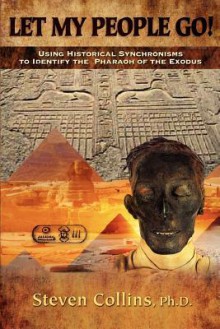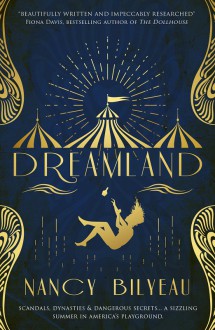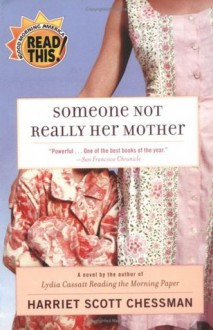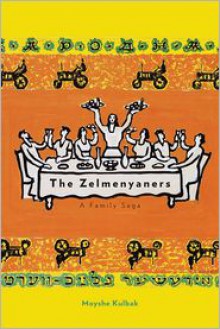



The debate on if the Bible is historical comes down to one event for proponents on both sides, The Exodus, not only if it happened but when. Let My People Go!: Using Historical Synchronisms to Identify the Pharaoh of the Exodus by Steven Collins combines what the Biblical text says with the historical record that Egyptologists and other historians have pieced together from numerous ancient sources in search of the man who Moses confronted.
Collins begins by examining the variables of the problem at hand from the actual Biblical account of events as well as the geographic extent of place names used, the propagandic nature of Pharaonic Egypt, and the on-the-ground facts that modern Egyptologists have constructed to get at actual history behind the propaganda. Using the Biblical account of the events from the time of Joseph to Joshua’s conquest of Canaan, in particular the consequences and impact of the Exodus events on Egypt, Collins looked to see if they matched up with Egyptian and wider Middle Eastern history at anytime to see if the Bible was historically accurate. Using this “synchronism” method, Collins pinpointed the 18th Dynasty’s rise as an anti-Semitic, due to the foreign Hyksos, empire that reached the Euphrates to it’s suddenly rapid fall internationally with domestic upheaval as seen with Akhenaten to the era that matched most of the points of reference. Collins then eliminated one-by-one the established candidates of the 18th Dynasty, as well as Ramesses II given popular culture, that Biblical scholars and mainstream Egyptologists put forward as the Pharaoh of the Exodus then showed how the “synchronism” timeline didn’t match the historical timeline. Collins ends the main body of the text with establishing Thutmose IV, the last Pharaoh of the powerful Thutmosid empire before it’s dramatic decline under his son Amenhotep III and grandson Akhenaten, as fitting perfectly the events of the Bible to go with the historical record.
In roughly 142 pages filled with text as well as tables and charts, Collins puts forward his case for the Pharaoh of the Exodus. Overall the scholarly portion of this monograph is very good for familiar with the Bible and the general history of the era, yet Collins unfortunately tried to find a middle ground between his main audience of Christians (fundamentalists or otherwise) and general readers that did not work as he explained a tad too much for one and too little for the other. The short length of the book and its layout between the covers were also problematic. In lengthening the book to explain certain things like the avenue of mainstream research he was comparing the Biblical events to and the leading Egyptologists behind them, even if those same individuals find the Exodus dubious; the book’s layout was unfortunately a mess considering it had very informative tables and charts, but those items were times with the text explaining them and at others back in the appendixes resulting the use of numerous bookmarks or looking back and forth.
Let My People Go! is an informative look at the Biblical narrative of the Israelite sojourn in Egypt, the Exodus, and the beginning of the Conquest in comparison to the mainstream view of ancient Egyptian and Middle Eastern history. While Steven Collins brings a lot of knowledge to the subject and does well to bring it across to the reader, his efforts are undercut by length and layout of the book which doesn’t do justice to his argument.

I thank NetGalley and the publisher for inviting me to participate in the blog tour for the launch of this book and for providing me an ARC copy of it, which I freely chose to review. This has in no way influenced my opinion.
I recently read and reviewed Bilyeau’s novel The Blue and loved it so much that I did not hesitate when I got an invitation to read her new novel and join the blog tour. Like the previous one, this book also successfully combines history with intrigue, adventures, mystery, a fantastic cast of characters, and a heroine who is trying to find her own way amid a society in turmoil due to changes in the status-quo and to international historical events.
As the description explains, the novel is set in New York and Coney Island in the summer of 1911. Peggy Batternberg, the protagonist (the author explains that she was inspired by the historical figure of Peggy Guggenheim when she created her main character), belongs to the upper class, although as she observes, her family is only a couple of generations away from very humble origins as immigrants, and they would not have figured among the very select of society a few years earlier. They are also Jewish (not very religious), and although their money protects them from the worst of prejudice and antisemitism, that does not mean it does not exist, as the novel exposes time and again. She is trying to lead her own life as a modern woman, but her family’s power and influence, and society’s double standards of morality for men and women make it difficult for her to break completely free, and she ends up having to leave her job at a bookstore and spend the summer holiday at a posh hotel near Coney Island. Of course, although the hotel is very close to the three amusement parks, including the Dreamland of the title, the clientele of both are separated by the chasm of money and social class.
Peggy is a fascinating character. She is very young, determined, and contradictory at times. She is strong but naïve, passionate and rushed, headstrong and totally unrealistic. She tries to be practical and become independent from her family, but she acknowledges that much of what she does is only possible because she has the support of her family, and she does not have to rely solely on her salary, like her colleagues at work. She lost her father when she was young, and she is aware of the kind of hypocritical behaviour the males of her family engage in, but no matter how she struggles against it, she is still trapped by the morality of the period. Following some fairly traumatic experiences with men of her own class (and the male sense of entitlement —especially of men of a certain class— runs through the novel as a theme, and unfortunately recent events only prove that things haven’t changed as much as we might like to think), it is unsurprising that she feels attracted to an artist, a futurist painter, a foreigner, and somebody who is genuinely interested in her as a person, and not as a rich heiress. I am not a fan of love at first-sight (or insta-love) stories, but considering what we know of the character and of her circumstances, it is easy to understand the attraction, and let’s say that I was quite reconciled to it by the end of the story. The character is forced to question herself and her motives more than once throughout the novel, and she does grow and develop as a result.
The story is told, almost in its entirety, in the first person, from Peggy’s point of view, but there are many other characters that create a rich tapestry of both, the wealthy upper-class society of the era (there are some real historical characters that make brief guest appearances as well), and also the working class, the underclass, and the artists working at the fair. The author paints a clear picture of the Batternberg family, its power structure, the differences between male and female roles within the dynasty, and it makes for a sobering and absorbing read, especially because over the course of the story, Peggy discovers things are even worse than she thought, and the web of deceit, secrets, and false appearances is woven thick. The fact that this people of loose morals look down upon hardworking individuals without a second thought is highlighted by the murders that take place in close proximity to the hotel, and how nobody (other than Peggy) seems to care about the victims or their relatives, only about preventing anything from disturbing the elegant guests. By contrast, some of the lower-class characters, that have the most to lose if things go wrong, go out of their way to help, even at a serious personal cost.
I must admit to being quite taken by some of the secondary characters that appear in the story, and in many cases I’d love to know more about them (the whole of Lilliput scene is amazing; Madame Kschessinska is very intriguing; the police detective; Stefan, of course; and what to say about Ben, Peggy’s cousin, a real puzzle), but I agree with many of the reviewers and Lydia, Peggy’s sister, is a favourite of mine as well. She knows her own mind, she is supportive of her sister, and she grows in strength and maturity through the story. With her like with most things and characters in the story, appearances can be deceptive.
The historical background is well achieved, and I loved the descriptions of Coney Island, the seaside hotels, the fast trains, the clothes, the incubators, the art, the buildings… It felt as if I was peering into that era, and even experiencing the heat, tasting the food, and joining in the rides. The descriptions don’t overwhelm the story but help create a realistic setting and increase our understanding of what the period and the place were like. This is a work of fiction, and although some characters and events are recreated, the novel does not claim to historical accuracy (in fact, Dreamland was no longer functioning in the summer of 1911), but I have no doubt that it will encourage readers to learn more about the period and about Coney Island.
As for the mystery side of things… There are red-herrings; there is misdirection, and several suspects, as it pertains to the genre. There is a fair amount of action, surprises, scares, and Peggy’s turn as an amateur detective is fraught with risk. Although she is neither experienced not particularly skilled as an investigator, she makes up for it with her determination, persistence, and a good nose for choosing her collaborators. This part of the story is the one that requires a greater suspension of disbelief, but the novel is not intended to be a police procedural, and the intrigue fits well into the overall story arc and will keep readers turning the pages at good speed.
I have already talked about the issue of gender and gender politics that is explored in the novel. Although things were moving and women were fighting for the vote, it was not easy, and if it was hard for privileged women to have a say on how their lives should be run, for working-class women it could get positively dangerous, when not lethal. The author also explores the issue of migration, the suspicion towards foreigners (despite the melting-pot mythos of the United States society), the prejudice of society and authorities towards newcomers, and this is also linked to international politics (and, of course, we readers know that the situation was about to get much worse and it would result in World War I). These subjects are well integrated into the fabric of the novel, elevating it beyond the typical historical adventure romp, and they make comparisons to current historical events unavoidable.
The writing style is compelling, with beautiful descriptions combined with a great skill in making us feel and experience the events first-hand, and a good pace, alternating between action and more contemplative scenes, without ever stalling the flow.
I’ve read some reviews that complain about the ending being somewhat rushed and sudden. It speaks to the skill of the author the fact that we don’t want the story to end, and although there are elements of it that I think could have been further developed, overall I enjoyed the ending, especially because it isn’t a conventional one.
In sum, I enjoyed the wild ride that is Dreamland. I wish I could have visited the real one, but lacking that opportunity, this is a close and satisfying second best. I congratulate the author for this great novel, and I look forward to the next.

This masterful and compassionate novel is split into a series of interlinked stories that tell the tale of Hannah Pearl. As Hannah’s memory of the present begins to fade, she increasingly inhabits the world of her ardent and frightened youth in war-torn France and England, while her memories of life in America with her daughter and granddaughters have almost been erased. Throughout the book each character must negotiate the fraught intricacies of memory, geography, and motherhood. The reader will discover and illuminate, with miraculous effect, all the pieces of this intelligent and dream-like puzzle.
Amazon.com
The plot revolves around three generations of women in a Connecticut family: Hannah Pearl, her daughter Miranda, and Miranda's grown daughters, Fiona and Ida. Hannah's mind is slowly being robbed by dementia. Living in an assisted living facility, most days Hannah's reality often has her slipping back to the year 1940, when she was a young wife and mother trying to escape France during World War II. The growing frequency of these moments becomes painfully aware to the family when Hannah is brought to Fiona's Sip & See for her new baby and the sight of the newborn mentally transports Hannah back to the day she gave birth to Miranda. Hannah mistakes Fiona's child for baby Miranda and tries to keep anyone else from taking the child away from her.
Meanwhile, Miranda becomes emotionally strained with the experience of being forced to watch her mother slowly fade away. The further Hannah slips, the more she reverts to speaking in French, which frustrated Miranda, who only learned minimal Latin and Spanish in school.
Love is difficult, bien sur. Yet one must love in any case. The world is terrible enough without it, in spite of its beauty: this light, this day, the trees burning yellow, gold, the white bird swinging past the window.
Fiona often chooses to ignore her grandmother's worsening condition, while Ida desperately wants to know the full story behind the memories. She decides to research Hannah's history, hoping whatever she uncovers will inspire her writing pursuits. After finishing college, Ida takes a journalism job in Paris, France. Fiona, having traded her graphic design career for motherhood, is a little jealous of her sister's life abroad.
Chessman uses a similar "domestic snapshots" approach to what she did with the vignettes crafted in Lydia Cassat Reading The Morning Paper. The writing here is still nice, but lacks that moving blend of warmth and melancholy (at least the level of it, it's here to some degree) of Lydia Cassat. There are some pretty heartbreaking scenes though, such as Hannah going out on her own and getting lost at the pharmacy, or the flashbacks to the war years, the loss of her sister Emma, being helped by a pharmacy clerk named Emily and confusing her for Emma.
I didn't find the characters of Miranda or Fiona terribly interesting. Though I understand the need for their presence in the plot, I would have preferred to have more of the story around Ida and Hannah, the relationship between them.

This is an entertaining satire, an episodic novel featuring a Jewish extended family living in Minsk in the early 1930s, and published contemporaneously as a serial, though not translated to English until long after the fact. Four brothers, their wives, adult children, and various other relatives all live together around a central courtyard, from which they watch rapid changes in their world, from the arrival of electricity to Soviet doctrines that distance the younger generation from their Jewish roots. Interestingly, although written in Belarus under Communist rule, the book seems to neither support nor oppose the regime; the young people’s enthusiasm is tempered by an imperfect reality, but the disorientation of the older generation is portrayed humorously. Perhaps, in a rare example for Communist-era literature still read today, the author intended to take no political position, and just poke fun at a traditional family with the political reality as a backdrop.
And it’s an enjoyable book, humorous and easy to read, with short chapters and a fair bit of dialogue. After reading the first half I would have given 4 stars, but the second half muddles the timeline and doesn’t add much in the way of new ideas or plot elements. It’s an ensemble cast, but many of the characters stand out clearly and I soon came to feel some affection for them. I was a little uncomfortable with the way the female characters are overall portrayed unsympathetically, but then I’m not sure this was always intended; Tonke, for instance, the most dogmatic of the family, is apparently an outright villain in the eyes of many reviewers, but a Soviet audience may have viewed her quite differently. I’m sure plenty of the satire went over my head; the introduction provides some interesting insight, though as usual, is best saved until after finishing the book if you’d rather avoid spoilers.
At any rate, this is overall an enjoyable and accessible book; you don’t need a lot of background to see much of the humor in it or to enjoy reading about the Zelmenyaners’ lives and foibles. The translation is also well-done, with the helpful inclusion of the occasional explanatory footnote.